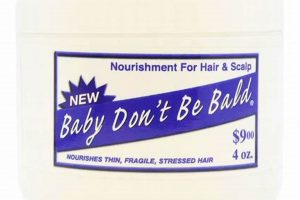Providing appropriate nourishment to infant squirrels is crucial for their survival when they are orphaned or require supplemental feeding. The diet must mimic the nutritional composition of a mother squirrel’s milk to support healthy growth and development.
Proper nutrition significantly increases the chances of survival and successful rehabilitation for these vulnerable animals. Supplying the correct food helps prevent malnutrition, dehydration, and metabolic bone disease, common ailments in improperly fed baby squirrels. Historical practices often relied on readily available milk substitutes that, while intended to help, often lacked the specific nutrients needed by squirrels, leading to health problems.
Understanding the specific dietary requirements, the preparation of suitable formulas, and appropriate feeding techniques are essential components of successful care for young squirrels. Subsequent sections detail the specifics of creating a balanced diet and implementing safe feeding practices.
Guidance on Infant Squirrel Nourishment
This section outlines crucial guidelines to ensure the healthy development of young squirrels requiring supplemental feeding. Adherence to these principles is paramount for successful rehabilitation.
Tip 1: Select an Appropriate Formula: Esbilac puppy milk replacer, diluted as directed by a veterinarian or wildlife rehabilitator, is generally recommended. Avoid cow’s milk, as it lacks the necessary nutrients and can cause digestive distress.
Tip 2: Maintain Sterility: Use sterilized syringes or eyedroppers to administer the formula. Bacteria can be detrimental to a young squirrel’s immune system.
Tip 3: Regulate Feeding Frequency: Newborn squirrels require feeding every 2-3 hours during the day, gradually decreasing in frequency as they mature. Overfeeding can lead to aspiration and pneumonia.
Tip 4: Stimulate Elimination: After each feeding, gently stimulate the anal region with a damp cloth to encourage urination and defecation. This mimics the mother squirrel’s behavior and is vital for proper bodily function.
Tip 5: Monitor Hydration: Observe the squirrel for signs of dehydration, such as sunken eyes or decreased skin elasticity. Administer electrolyte solutions like Pedialyte if necessary, under the guidance of a professional.
Tip 6: Introduce Solids Gradually: As the squirrel matures (around 5-6 weeks), introduce small amounts of solid foods, such as rodent block, nuts (without shells), and vegetables, to supplement the formula. Monitor their digestive response to new foods.
Tip 7: Provide Fresh Water: Always make fresh water available in a shallow dish once the squirrel begins consuming solid food.
Following these guidelines ensures that the infant squirrel receives optimal nutrition, promoting healthy growth and development, and maximizing its chances of survival.
The following sections will explore potential complications and further insights into long-term care and rehabilitation.
1. Formula Composition
Formula composition is a crucial determinant of the health and survival of infant squirrels requiring supplemental feeding. The direct effect of inadequate formula composition manifests as malnutrition, stunted growth, and metabolic bone disease. The essential nutrients present in a mother squirrels milkfats, proteins, carbohydrates, vitamins, and mineralsmust be replicated as closely as possible to ensure proper development. For example, a formula deficient in calcium can lead to metabolic bone disease, resulting in weakened bones and potential fractures. Conversely, a formula with an improper fat-to-protein ratio can cause digestive issues and hinder nutrient absorption. The selection of an appropriate formula, such as diluted Esbilac, is thus not arbitrary but a deliberate choice informed by the physiological needs of the developing squirrel.
The practical significance of understanding formula composition is evident in rehabilitation efforts. Wildlife rehabilitators meticulously adjust the formula’s dilution and supplements based on the squirrel’s age, weight, and observed health status. Close monitoring of the squirrel’s fecal consistency, activity levels, and weight gain provides valuable feedback on the formula’s suitability. If a squirrel exhibits diarrhea, for instance, the formula may be too concentrated or contain an ingredient causing digestive upset. Adjustments are then made to optimize the nutrient intake and promote healthy digestion.
In summary, the connection between “what to feed baby squirrels” and “formula composition” is one of cause and effect. The selection and preparation of a formula with appropriate nutritional components are foundational to the successful rearing of orphaned squirrels. Challenges remain in replicating the exact composition of a mother squirrel’s milk, necessitating careful observation and iterative adjustments to the formula. Success in this area directly influences the squirrel’s long-term health and ability to be released back into the wild.
2. Feeding Frequency
The frequency with which infant squirrels are fed directly influences their health and development. Precise control over feeding intervals is as crucial as the formula’s composition when determining “what to feed baby squirrels,” preventing both malnutrition and digestive complications.
- Age-Dependent Intervals
Newborn squirrels, distinguished by their lack of fur and closed eyes, require feeding every 2-3 hours. As they mature and their eyes open (around 3-4 weeks), the feeding interval can be extended to every 4-5 hours. These intervals reflect the increased capacity of their digestive systems and their growing energy demands. Deviation from these intervals may lead to hypoglycemia in very young squirrels or overfeeding, causing digestive upset, in older infants.
- Nocturnal Dormancy
Despite requiring frequent feedings during the day, nighttime feedings are generally not necessary, as infant squirrels enter a state of dormancy. Interrupting this dormancy can disrupt their natural sleep cycles and stress the animal. Providing a warming source can aid with energy conservation during this period. Understanding this day-night cycle is paramount to the proper frequency.
- Volume Regulation
Feeding frequency is directly linked to the volume of formula administered. Shorter intervals necessitate smaller volumes to prevent overfeeding and aspiration. Conversely, extended intervals may warrant slightly larger volumes, but only within the limits of the squirrel’s digestive capacity. Calculating appropriate volumes based on weight and age, divided across the necessary feedings, is a vital aspect of care.
- Weaning Considerations
As solid foods are introduced (around 5-6 weeks), the frequency of formula feedings should gradually decrease. This reduction encourages the squirrel to explore and consume solid foods, stimulating the development of its teeth and jaw muscles. An abrupt cessation of formula can lead to stress and nutritional deficiencies. Dietary transition needs to be gradual.
The interplay between feeding frequency, age-appropriate volumes, and the introduction of solid foods underscores the dynamic nature of infant squirrel care. Careful adherence to these principles, alongside diligent observation, maximizes the likelihood of successful rehabilitation. Ultimately, understanding and appropriately managing feeding frequency is integral to providing adequate nutrition, directly impacting the animal’s health and future well-being.
3. Hydration Maintenance
Hydration maintenance is a critical facet of caring for infant squirrels, directly impacting their survival rates. Dehydration can rapidly lead to organ failure and death in these small mammals. Therefore, understanding and implementing effective hydration strategies are essential when determining “what to feed baby squirrels.”
- Formula Dilution and Water Content
The initial and most crucial aspect of hydration is ensuring the formula itself contains adequate water. Following dilution instructions for milk replacers such as Esbilac is paramount. Deviation from these instructions, such as using a more concentrated formula, can lead to dehydration. Observing the squirrel’s fecal consistency is also relevant. Firm or dry fecal matter often indicates insufficient hydration.
- Supplemental Electrolyte Solutions
In cases of observed dehydration, such as sunken eyes or decreased skin turgor, supplemental electrolyte solutions like unflavored Pedialyte can be administered. These solutions help replenish lost fluids and electrolytes, restoring physiological balance. It is crucial to administer electrolyte solutions separately from formula to avoid diluting the nutrient content of feedings.
- Environmental Humidity
Maintaining appropriate environmental humidity contributes to overall hydration. Particularly during the initial weeks of life, infant squirrels are susceptible to dehydration from dry air. Providing a slightly humid environment, through the use of a humidifier or damp towels placed near the squirrel’s enclosure, can help mitigate this risk. Monitoring humidity levels with a hygrometer is recommended.
- Addressing Underlying Conditions
Dehydration can be a secondary symptom of underlying medical conditions, such as infections or parasites. Addressing these conditions is paramount to resolving the dehydration. A veterinarian or experienced wildlife rehabilitator should be consulted to diagnose and treat any underlying medical issues that may be contributing to dehydration.
The effective maintenance of hydration in infant squirrels is multifaceted, encompassing proper formula preparation, strategic use of electrolyte solutions, environmental control, and the prompt treatment of underlying medical issues. These strategies, when integrated into a comprehensive care plan, significantly improve the chances of survival and successful rehabilitation. Dehydration needs proper attention.
4. Solid Introduction
The “Solid Introduction” phase is a pivotal transition point in the dietary management of infant squirrels and an integral component of determining “what to feed baby squirrels.” This phase represents the shift from a solely milk-based diet to one incorporating solid foods, mirroring the natural progression observed in wild squirrels as they mature and develop the capacity to forage. Premature or inappropriate introduction of solids can result in digestive upset, nutrient malabsorption, or even choking hazards, underscoring the need for a carefully managed and timed approach.
The appropriate timing for “Solid Introduction” is generally around 5-6 weeks of age, coinciding with the emergence of teeth and increased curiosity towards the environment. Acceptable initial solid foods include commercially available rodent blocks, specifically formulated to provide balanced nutrition, as well as small pieces of soft, easily digestible vegetables and fruits. Nuts, while a natural part of an adult squirrel’s diet, should be introduced sparingly and without shells to prevent digestive problems or choking. Observation of the squirrel’s fecal consistency, appetite, and overall health is crucial during this transition. Soft stools or a decrease in appetite may indicate that the solids are being introduced too quickly or that the specific food item is not well-tolerated.
In conclusion, “Solid Introduction” is a critical element of the dietary regimen for infant squirrels. The timing and manner of its implementation significantly impact the animal’s nutritional status and overall well-being. A measured and observant approach, coupled with the selection of appropriate food items, ensures a smooth transition and contributes to the successful rehabilitation of orphaned or injured squirrels, in line with an appropriate understanding of “what to feed baby squirrels”.
5. Dietary Progression
Dietary progression is inextricably linked to determining “what to feed baby squirrels,” representing the planned and carefully executed evolution of their nutritional intake from initial formula to eventual independence on solid foods. Improper dietary progression poses significant risks, including malnutrition, digestive disorders, and impaired development. The connection is cause-and-effect: controlled dietary changes directly impact the squirrel’s ability to thrive. It’s not just about what they eat but when and how those foods are introduced.
Consider the scenario of a squirrel abruptly switched from formula to a diet primarily of nuts. The lack of gradual introduction would overwhelm its digestive system, potentially causing diarrhea and inhibiting proper nutrient absorption. Conversely, a squirrel remaining solely on formula past the age of nutritional sufficiency would miss out on vital developmental milestones associated with chewing and processing solid food. Dietary Progression requires adapting to the physical and developmental readiness of the squirrel.
Effective dietary progression in infant squirrels is a dynamic process requiring constant monitoring and adjustment. It begins with age-appropriate formula feeding, transitions to the gradual introduction of softened rodent blocks and vegetables, and culminates in a varied diet of nuts, seeds, and fruits. Challenges include individual variations in digestive sensitivity and potential food allergies, necessitating careful observation and consultation with wildlife rehabilitation experts. Ultimately, “Dietary Progression” is not merely a component of “what to feed baby squirrels”; it is the framework ensuring those choices translate into sustained health and successful release into the wild.
Frequently Asked Questions
The following questions address common concerns related to the appropriate nutrition of infant squirrels requiring human intervention.
Question 1: Is cow’s milk an acceptable substitute for squirrel formula?
Cow’s milk is not a suitable replacement. Its nutritional composition differs significantly from squirrel milk, often causing digestive distress and hindering proper development.
Question 2: How often should newborn squirrels be fed?
Newborn squirrels, characterized by a lack of fur and closed eyes, require feeding every 2-3 hours during daylight hours. Nighttime feedings are generally not necessary.
Question 3: What are the signs of dehydration in a baby squirrel?
Signs of dehydration include sunken eyes, decreased skin elasticity, and lethargy. Electrolyte solutions, administered under professional guidance, may be necessary.
Question 4: At what age should solid foods be introduced?
Solid foods can be introduced around 5-6 weeks of age. Suitable options include rodent blocks, soft vegetables, and small pieces of fruit, introduced gradually.
Question 5: What type of nuts are safe for infant squirrels?
Nuts should be offered sparingly and without shells to prevent choking hazards or digestive issues. Start with softer nuts like walnuts or pecans.
Question 6: Can overfeeding harm a baby squirrel?
Overfeeding can lead to aspiration pneumonia and digestive upset. It is crucial to adhere to recommended feeding volumes based on age and weight.
Properly nourishing an infant squirrel is a delicate process requiring careful attention to detail. Consulting with a wildlife rehabilitator is advised for optimal care.
The following sections will cover the legal and ethical considerations related to wildlife rehabilitation.
Conclusion
This exposition has explored the crucial aspects of “what to feed baby squirrels,” emphasizing the importance of appropriate formula composition, feeding frequency, hydration maintenance, solid introduction, and dietary progression. The implementation of these principles is essential for the survival and successful rehabilitation of orphaned or injured infant squirrels.
The proper nourishment of these vulnerable animals demands a commitment to evidence-based practices and a recognition of the complex interplay between diet and development. Continued research and collaboration among wildlife professionals are necessary to refine existing knowledge and enhance the outcomes for squirrels in need. Prioritizing the nutritional needs of these animals reflects a broader commitment to responsible wildlife stewardship.





![Buy Your [Brand] Rattan Baby Bassinet Today! Baby Care 101: Essential Tips for Happy, Healthy Babies Buy Your [Brand] Rattan Baby Bassinet Today! | Baby Care 101: Essential Tips for Happy, Healthy Babies](https://singlebabies.com/wp-content/uploads/2025/11/th-758-300x200.jpg)

